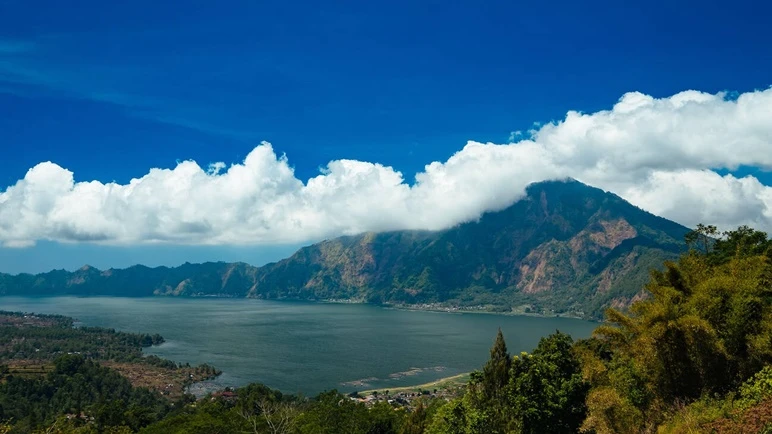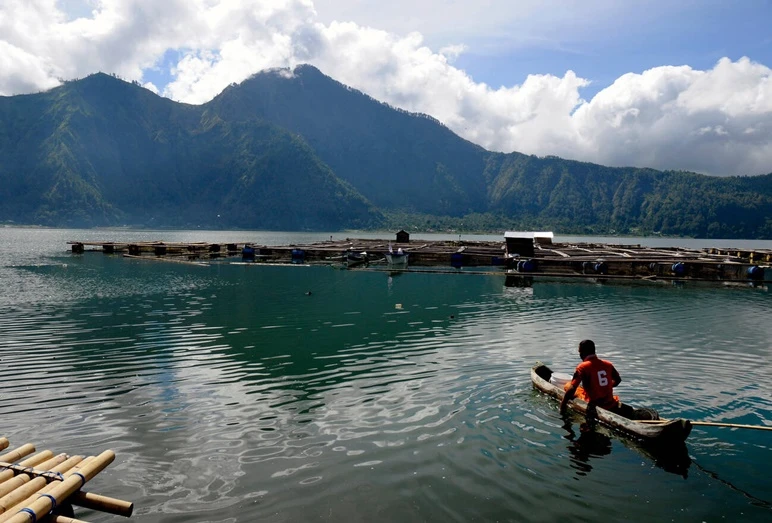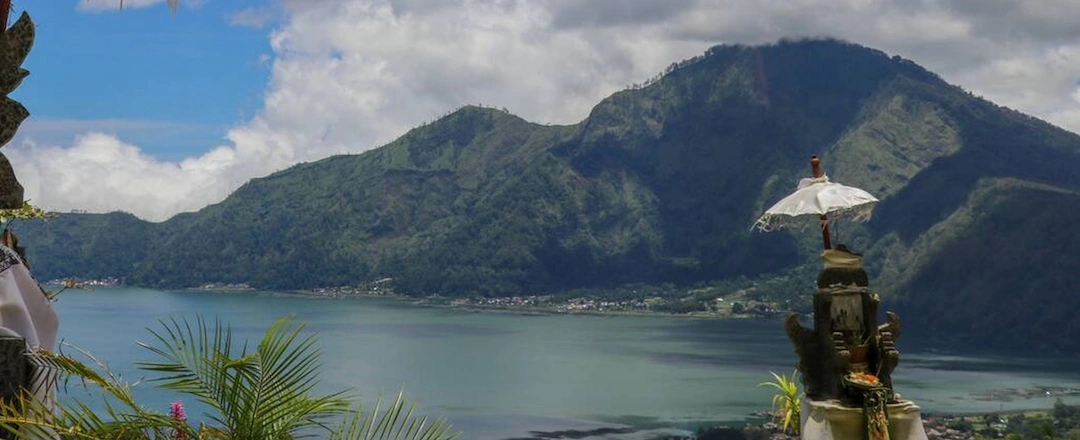High in the mist-veiled highlands of Kintamani, surrounded by the towering remnants of a prehistoric eruption, lies one of Bali’s most spectacular and spiritually resonant natural wonders—Lake Batur. This vast, crescent-shaped body of water spans approximately 16 square kilometers and lies cradled within the dramatic caldera of Mount Batur, an active volcano whose quiet rumblings echo the power of the earth beneath.
Surrounded by the towering remnants of a prehistoric eruption, lies one of Bali’s most spectacular and spiritually resonant natural wonders
Nature’s Cradle: A Lake Born of Fire
Lake Batur was formed around 29,000 years ago, after one of the most cataclysmic eruptions in the island’s geological history. That explosion created the caldera—a massive crater surrounded by jagged ridges—and, over millennia, rainwater and springs gradually filled the basin, giving birth to the lake we see today.

Perched at 1,050 meters above sea level, the lake is fed by underground springs and cool mountain runoff. The surrounding terrain is marked by stark black lava flows, green forest ridges, and steep crater walls—a dramatic contrast that gives Lake Batur its surreal and majestic character. When morning fog rolls across the surface and the rising sun casts a golden glow over the caldera rim, it feels as if the lake is exhaling ancient secrets.
Hiking Mount Batur at sunrise is a favorite activity for adventurers, and many pair the trek with a lakeside visit. After the exertion of the climb, the serenity of the lake offers a moment of reflection, made even more profound by the mythical aura that envelops the region.
Spiritual Heartland: The Temple of Dewi Danu
At the northeastern edge of the lake stands one of Bali’s most important spiritual sites: Pura Ulun Danu Batur. Dedicated to Dewi Danu, the goddess of lakes and rivers, the temple is a focal point for Balinese Hindu water rituals. Dewi Danu is believed to regulate the flow of life-giving water across the island, and offerings to her ensure fertility, prosperity, and harmony with the natural world.
Originally located closer to the water’s edge, the temple was destroyed during the 1926 eruption and later rebuilt higher on the caldera’s slope. Despite its relocation, the temple's spiritual pull remains strong. The complex comprises several shrines and intricately carved pavilions, often veiled in incense smoke and adorned with fresh offerings of flowers and fruit.
The surrounding communities maintain a profound connection to this spiritual center. Local farmers still use the subak irrigation system—an ancient, cooperative water-sharing method that is not only practical but deeply spiritual. Recognized as a UNESCO cultural heritage practice, subak represents the Balinese philosophy of Tri Hita Karana, the three-fold harmony between people, nature, and the divine.
Preserving a Living Sacred Landscape
Bali is a land where myth and reality walk hand in hand, and Lake Batur is no exception. According to Balinese cosmology, the island once floated aimlessly in the vast ocean. To stabilize it, the gods transported the peak of Mount Semeru from Java and split it into two parts—forming Mount Agung and Mount Batur. These sacred peaks now anchor the spiritual and energetic balance of the island.

Another legend tells the story of Kebo Iwa, a benevolent giant whose enormous appetite eventually drove a desperate community to trick and trap him. They buried him alive in a massive pit, which filled with water and became Lake Batur. The mound of displaced soil formed Mount Batur. Today, this myth is told not with fear, but as a reminder of power, balance, and reverence for forces greater than ourselves.
Modern Encounters and Ancient Echoes
While steeped in legend, Lake Batur is far from frozen in the past. The lakeside village of Toya Bungkah offers a more grounded experience, with simple guesthouses, lakeside cafés, and natural hot springs that bubble up from the volcanic crust. Soaking in these mineral-rich waters with a view of the lake and looming Mount Batur is nothing short of soul-restoring.

Visitors can also enjoy boating, canoeing, or cycling along the caldera rim, taking in views that stretch across rice fields, lava plains, and forests. The area’s cooler climate offers a welcome break from Bali’s lowland heat, making it a favorite among photographers, honeymooners, and spiritual seekers alike.




 Billy Bagus
Billy Bagus
 Jun 30, 2025
Jun 30, 2025






